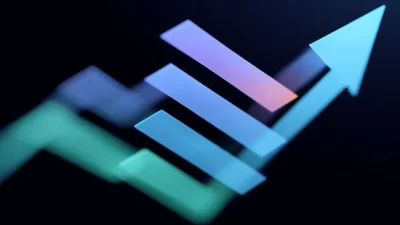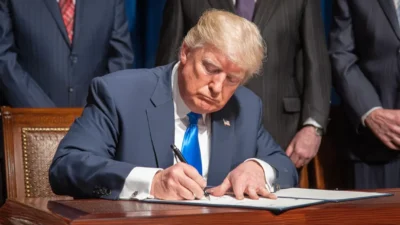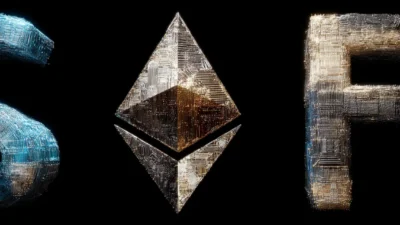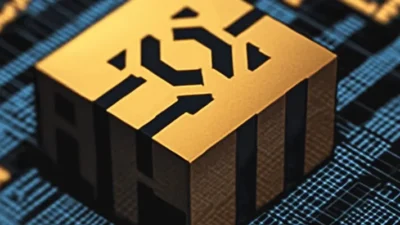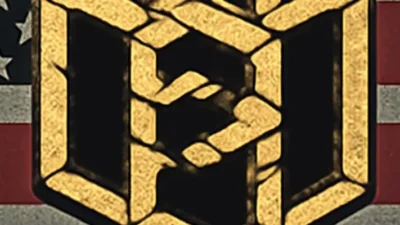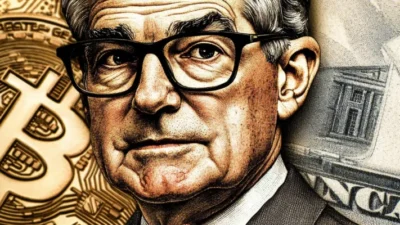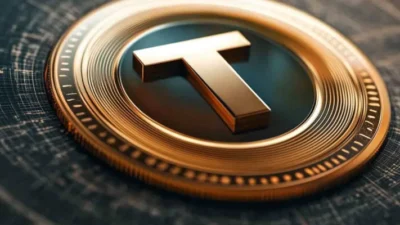TLDR
- Fidelity recently filed a new document with the SEC.
- They want to track one of their funds using Ethereum.
- It’s being called “OnChain”, and will track ticker FYHXX.
Traditional finance giants continue to jump onto the blockchain stage in a big way. Fidelity, one of the world’s largest asset managers with a massive $5.9 trillion under its belt, recently announced “OnChain” shares for its Treasury money market fund, recorded on the Ethereum blockchain.
Here’s what this means for crypto enthusiasts, cautious investors, and everyone sitting somewhere in between.
What’s Fidelity Getting Into with OnChain?
Fidelity Investments has filed with the U.S. Securities and Exchange Commission (SEC) to roll out a share class cleverly dubbed “OnChain” for its Fidelity Treasury Digital Fund (FYHXX).
The filing is pretty long, but we encourage everyone to give it a once over.
Onchain is no run-of-the-mill fund. Shares will be recorded on the Ethereum blockchain, marking a shift toward integrating blockchain into traditional financial products and providing yet another amazing use case for our favorite tech.
But don’t get too excited thinking you’re about to own tokenized U.S. Treasury securities. Fidelity isn’t tokenizing the investments themselves (not yet, at least).
The blockchain element is solely for the share-recording level. Think of it as putting a traditional vinyl collection onto Spotify — not changing the music but making it easier to track and manage.
The Hybrid We’ve Been Waiting On
While ownership of OnChain shares will be recorded on the Ethereum blockchain, Fidelity will officially maintain traditional book-entry records. These will serve as the official ownership ledger, updated daily to be reconciled with the blockchain entries.
According to their SEC filing, “The transfer agent maintains the official record of share ownership of the OnChain class in book-entry form. Ownership of the OnChain class will also be digitized on a public blockchain.”
Translation? Blockchain’s here for transparency and added security but isn’t replacing traditional financial record-keeping anytime soon.
Dypto Crypto’s two pennies? We think they’re testing blockchain security and transparency. They want to make sure it is as advertised. On the flip side, they probably also want to ease users into it. There are still a lot of people out there who don’t trust blockchain or crypto.
What’s in Fidelity’s Treasury Money Market Fund?
Here’s a quick crash course for those not deep into money markets. Fidelity’s Treasury Digital Fund primarily focuses on investing in cash and U.S. Treasury securities. We’re talking bonds here, folks. It’s about as low risk as you can get.
The strategy keeps risk low while aiming for income generation, capital preservation, and liquidity (a fancy way of saying “reliable and stable returns without too much drama”).
And yes, while the fund aligns with all the standard money market fund regulations, it’s worth repeating that the securities themselves aren’t tokenized. The Ethereum integration is all about transparency of the shares, not the underlying assets.
When Will This Be a Thing?
The OnChain class shares are set to go live on May 30, pending approval from the SEC. If everything moves forward as planned, investors will be able to access blockchain-backed transparency for what’s traditionally a pretty unremarkable financial product.
Why Is This Important?
The financial world is steadily warming up to blockchain tech, and Fidelity’s move is just the latest in a series of steps toward merging decentralized technologies with traditional financial systems. Here’s why you should care:
- Transparency Boost – Recording share transactions on the Ethereum blockchain adds a new layer of transparency. For investors, this means a simplified way to track ownership and ensure accuracy without relying 100% on intermediaries.
- Institutional Validation for Blockchain – Tired of people questioning the legitimacy of blockchain technology? Yeah. So are we. Moves like these by established finance giants help cement blockchain’s place in mainstream financial systems.
- Laying the Groundwork for Tokenized Finance – While Fidelity isn’t tokenizing the underlying assets here, using blockchain technology to record share ownership is a step in that direction. Tokenized Treasuries may still be years away, but we’re inching closer to an exciting future.
Investors of all levels stand to benefit as concepts like transparency, reduced administrative overhead, and efficiency seep into traditional finance via blockchain.
If you’re a crypto investor, Fidelity’s OnChain is one more reason to pay attention to Ethereum. If you’re new to crypto and don’t yet see what the fuss is about, here’s your chance to dip your toes into the blockchain waters — with the safety net of traditional financial systems backing you up.
The Bigger Picture
Will OnChain shares revolutionize investing overnight? Nope.
But they represent an important evolution.
Integrating blockchain tech into old-school financial products could unlock even greater efficiencies and attract more people to trust and engage with decentralized systems.
Fidelity’s hybrid approach underscores that finance doesn’t need to ditch tradition entirely to adopt innovation. By bridging the gap between traditional systems and blockchain, Fidelity is planting the seeds for bigger adaptations in the future of finance.
Another Piece of the Puzzle
While OnChain shares are a small piece of the puzzle, they hint at a future where blockchain becomes less of a buzzword and more of a foundational technology in everyday investing. The marriage of centralized and decentralized finance could open up entirely new markets and opportunities for investors.
Ethereum is at the heart of this innovation, making it one of the most interesting blockchains to watch in 2025. Whether you’re an experienced investor or simply crypto-curious, Fidelity’s move might just give you the nudge you need to start exploring.
Who knows? Someday soon, you might not just be tracking shares on the blockchain. For now, though, keep a close eye on developments like OnChain shares and how blockchain tech is slowly changing the world.






































